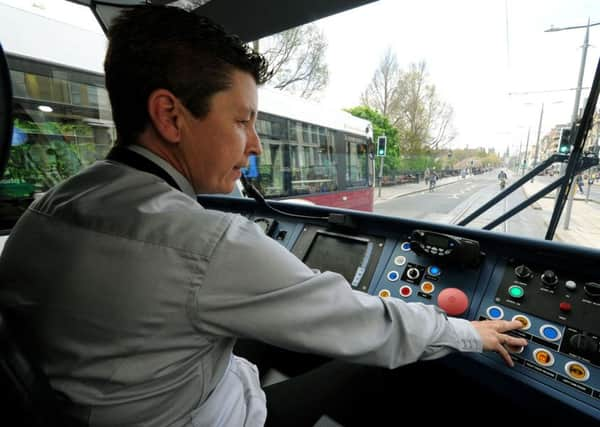Trams extension talk intensifies - is Leith next?


Residents of Leith weren’t invited because they never got the tram they were promised, paid for, and suffered through years of roadworks chaos to get. It’s a reminder of why, when the tram launched a year ago, city chief executive Sue Bruce said: “It’s not a day for jubilation.”
That’s not to take away from the impressive results posted in the service’s first year – 4.92 million passengers and healthy revenue figures. Tram staff from director Tom Norris to the ticket-checkers have worked very hard, and they deserve to have their cake.
Advertisement
Hide AdAdvertisement
Hide AdBut residents in the north of the city will want to know: what next? Revenue is above expectations, but that doesn’t conceal the fact that the tram has made a loss of roughly £1.3m on day-to-day operations. Further, less damaging, losses are predicted over the next two years.
According to Paul Tetlaw of pressure group Transform Scotland, the only way to improve the bottom line for the tram is to tear up the revenue projections entirely by adding millions more passengers – and that will only happen if an extension is built.
“It seems to me that we have a political consensus that it is only sensible to extend the tram system to build a broader network,” he said. “Only then will the tram achieve its potential.”
This month we will find out if that can be done in a cost-effective way. The city already owns the rails and other equipment to build the line, as well as the fleet of trams to run it – nine out of the 27 vehicles currently living at the Gogar depot are rotated into regular use, but aren’t actually currently needed.
That doesn’t mean construction would be plain sailing. The latest cost estimate for taking the tram to Newhaven is £80m – but that figure dates back almost a decade, so it should be treated with the right level of scepticism. Remarkably, despite the upheaval of the utilities diversion on Leith Walk, more pipes will need to be diverted, and it isn’t clear whether the city has a complete audit of where everything sits beneath the Leith Walk roadway.
In addition, Edinburgh City Council has spent £9.1m to put Leith Walk right after years of damaging tram works that drove businesses to the brink – and several of them right over the edge. Council leaders promised that the work would be “tram-proofed”, but that hasn’t happened, and much of what has already been completed will need to be torn up.
It underlines why £1m had to be paid to an expensive “fixer” to sort out the original construction shambles.
While taxpayers are paying £1m a year to fund a former judge and four lawyers to examine what went wrong the last time, the city could be setting out on a major expansion of the tram network – armed with none of its findings. How can lessons be learned if we don’t know what those lessons are?
Advertisement
Hide AdAdvertisement
Hide AdThat’s why residents in Leith won’t be setting off any party poppers, no matter how well the tram has performed.
‘Impact on congestion is the real acid test’
By Neil Greig
So the tram is one year old and ridership and income is above expectations which is, of course, welcome news.
Time is a great healer and no doubt the roadworks, the delays, the mess, the confusion and the disruption are fading in the minds of many drivers and some local business owners.
For others who lost revenue it will take much longer to fade into the past.
The ongoing inquiry will ultimately decide if it really was worth the final bill, but in the meantime the negative stories are reducing and trams are becoming part of everyday life for Edinburgh people.
That people find a high-quality, fast and reliable service attractive is no surprise to me.
The Institute of Advanced Motorists has always said that a first-class city should have a first-class public transport system and experience from around the world is that car drivers do find trams much more attractive than buses.
But is there still just a curiosity value among the many users, or has it promoted a real shift from car to public transport leading to a noticeable reduction in city centre traffic?
Advertisement
Hide AdAdvertisement
Hide AdThe impact on congestion is the real acid test and it is vital that Edinburgh City Council provides clear data to prove that those on the tram have actually ditched the car and not just transferred from the bus.
The park-and-ride facilities are being used but cost is still an issue and if the operators are really serious about modal shift then reducing the cost of parking would be a real incentive.
The restricted nature of the network will always limit the attractiveness of the tram and extending the system is the only long-term solution to this.
But, given the past performance on delivery, it would take a very brave politician to push for this.
• Neil Greig is the director of research and policy at the Institute of Advanced Motorists